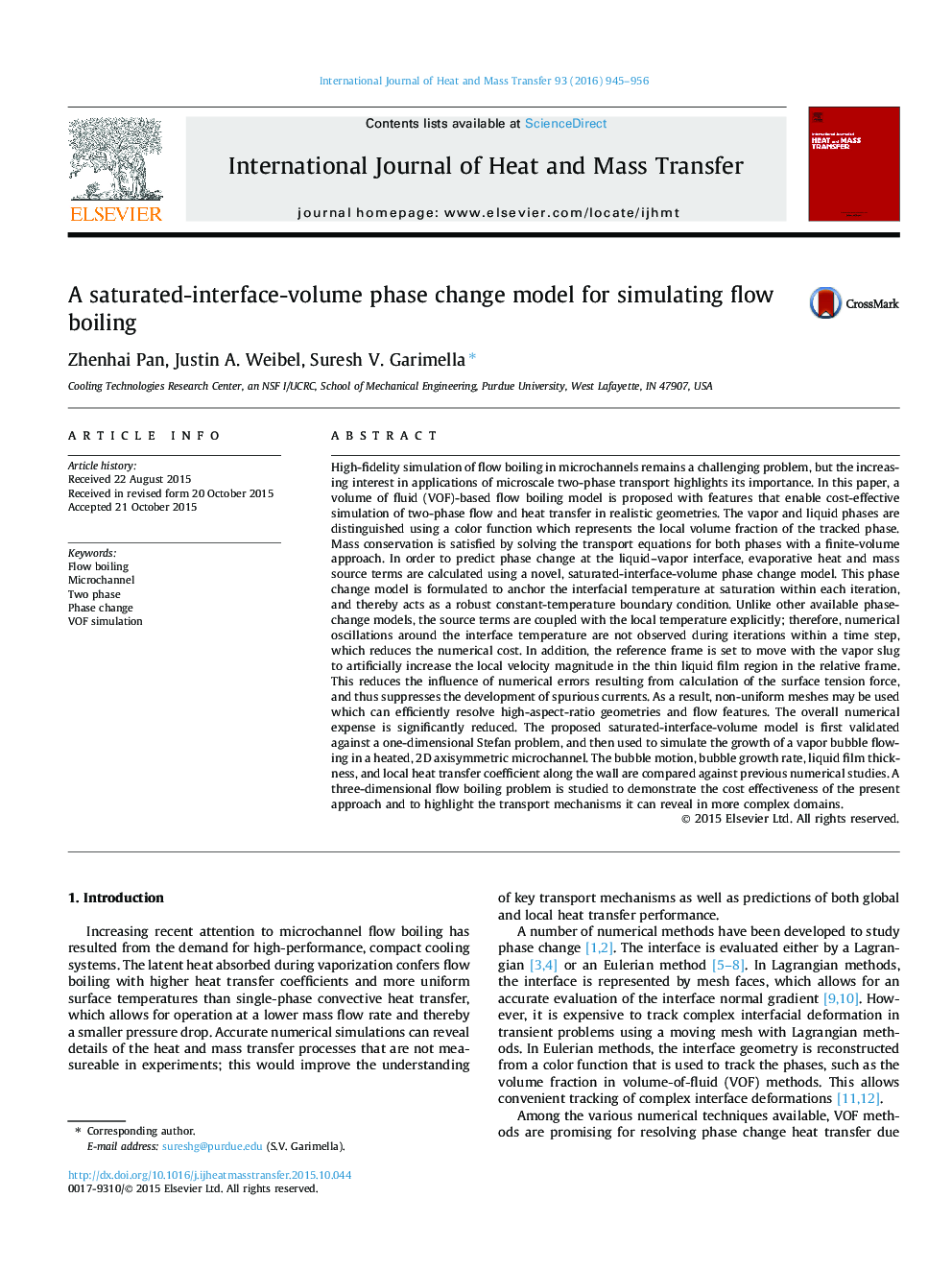| کد مقاله | کد نشریه | سال انتشار | مقاله انگلیسی | نسخه تمام متن |
|---|---|---|---|---|
| 7056275 | 1458049 | 2016 | 12 صفحه PDF | دانلود رایگان |
عنوان انگلیسی مقاله ISI
A saturated-interface-volume phase change model for simulating flow boiling
ترجمه فارسی عنوان
مدل تغییر فاز اشباع-رابط-حجمی برای شبیهسازی جریان
دانلود مقاله + سفارش ترجمه
دانلود مقاله ISI انگلیسی
رایگان برای ایرانیان
کلمات کلیدی
موضوعات مرتبط
مهندسی و علوم پایه
مهندسی شیمی
جریان سیال و فرایندهای انتقال
چکیده انگلیسی
High-fidelity simulation of flow boiling in microchannels remains a challenging problem, but the increasing interest in applications of microscale two-phase transport highlights its importance. In this paper, a volume of fluid (VOF)-based flow boiling model is proposed with features that enable cost-effective simulation of two-phase flow and heat transfer in realistic geometries. The vapor and liquid phases are distinguished using a color function which represents the local volume fraction of the tracked phase. Mass conservation is satisfied by solving the transport equations for both phases with a finite-volume approach. In order to predict phase change at the liquid-vapor interface, evaporative heat and mass source terms are calculated using a novel, saturated-interface-volume phase change model. This phase change model is formulated to anchor the interfacial temperature at saturation within each iteration, and thereby acts as a robust constant-temperature boundary condition. Unlike other available phase-change models, the source terms are coupled with the local temperature explicitly; therefore, numerical oscillations around the interface temperature are not observed during iterations within a time step, which reduces the numerical cost. In addition, the reference frame is set to move with the vapor slug to artificially increase the local velocity magnitude in the thin liquid film region in the relative frame. This reduces the influence of numerical errors resulting from calculation of the surface tension force, and thus suppresses the development of spurious currents. As a result, non-uniform meshes may be used which can efficiently resolve high-aspect-ratio geometries and flow features. The overall numerical expense is significantly reduced. The proposed saturated-interface-volume model is first validated against a one-dimensional Stefan problem, and then used to simulate the growth of a vapor bubble flowing in a heated, 2D axisymmetric microchannel. The bubble motion, bubble growth rate, liquid film thickness, and local heat transfer coefficient along the wall are compared against previous numerical studies. A three-dimensional flow boiling problem is studied to demonstrate the cost effectiveness of the present approach and to highlight the transport mechanisms it can reveal in more complex domains.
ناشر
Database: Elsevier - ScienceDirect (ساینس دایرکت)
Journal: International Journal of Heat and Mass Transfer - Volume 93, February 2016, Pages 945-956
Journal: International Journal of Heat and Mass Transfer - Volume 93, February 2016, Pages 945-956
نویسندگان
Zhenhai Pan, Justin A. Weibel, Suresh V. Garimella,
